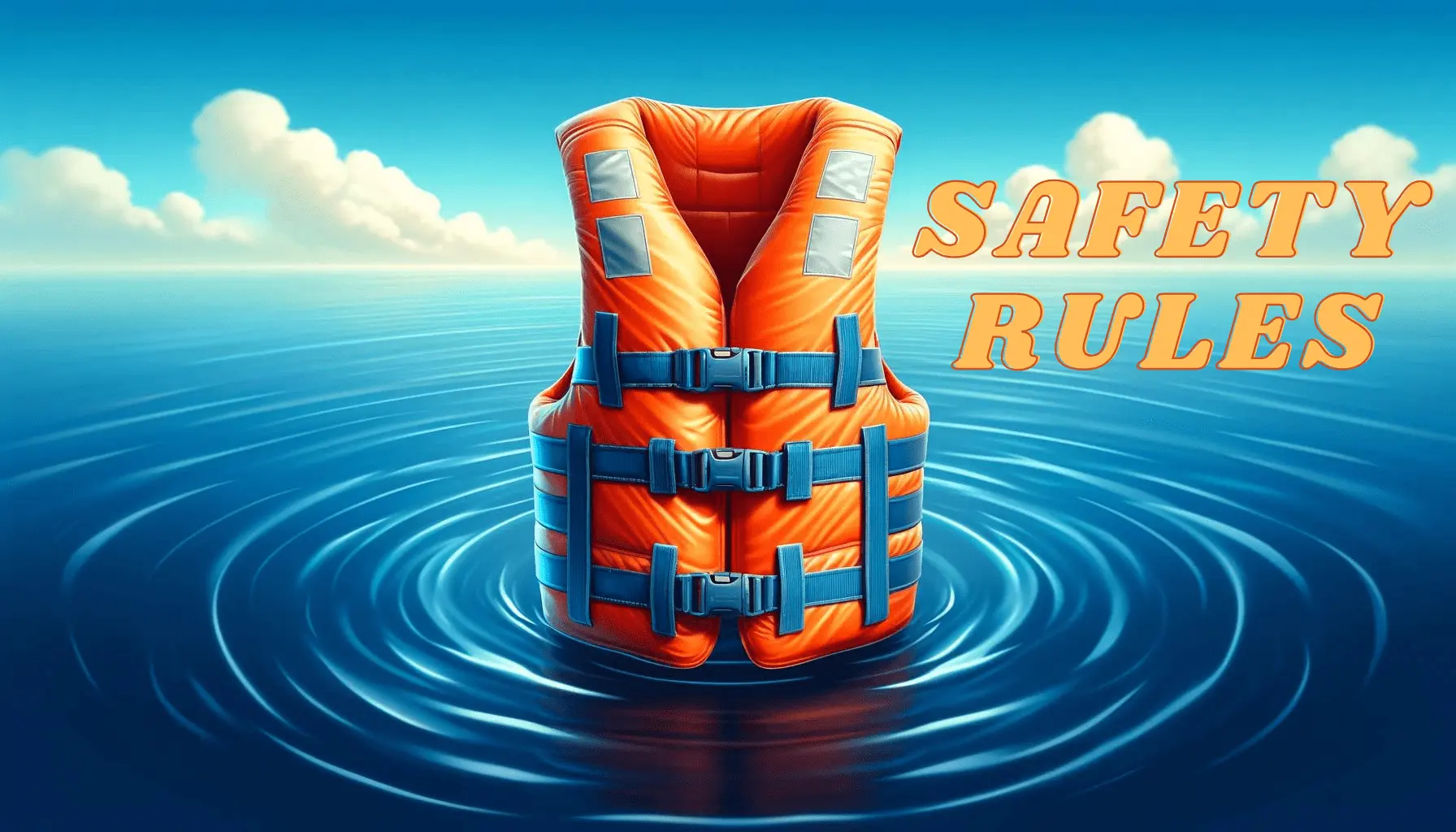After considering the type of kayaking you want to do and figuring out how to transport your kayak for adventures, the next major challenge is storing it efficiently.
If you live in an apartment, you may have a bigger challenge than those who live in houses with garages and yards.
Here we will detail five proven methods for storing your kayak in small spaces like your apartment.
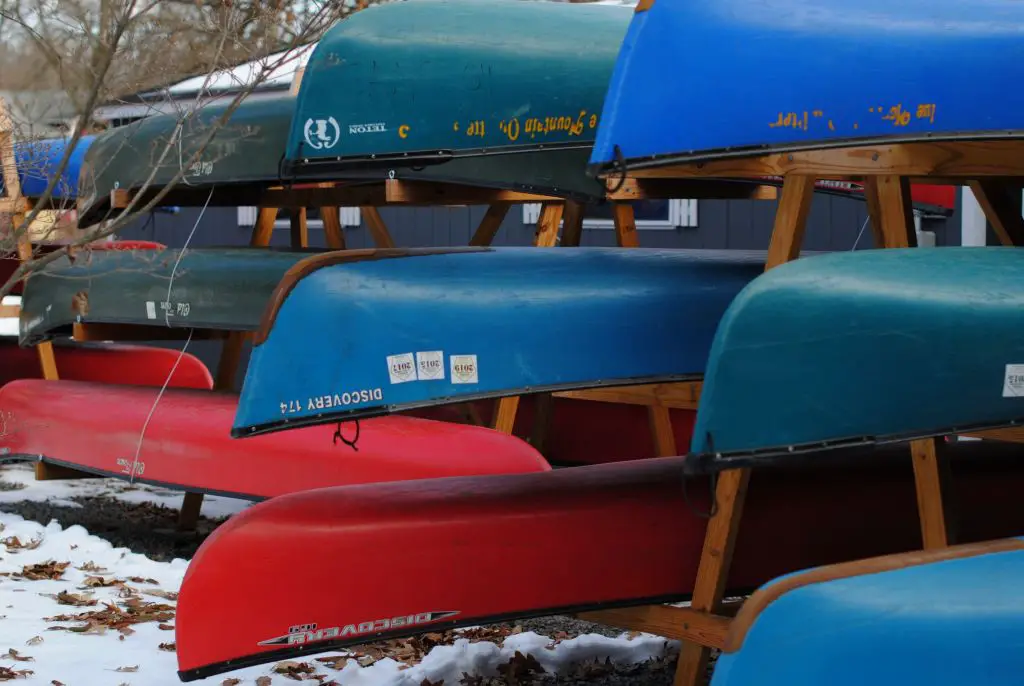
Can you store your kayak in an apartment?
Of course, the answer to this question is yes. Usually, storage is an issue when you live in an apartment. However, a solution can always be found, and I’ll share a few ideas later, so it’s reasonable to say that most kayaks can be stored in an apartment.
If you have limited space, you must consider a variety of design solutions to accommodate an active lifestyle. Essentially, storing your kayak is definitely doable.
Where to store a kayak in an apartment
Of course, you will have to be creative and determined to design your space to achieve efficient living with your kayak in your apartment.
Especially if you live in a small studio apartment of 60 square meters.
To make storing your kayak inside your apartment possible, you will have to make the kayak easy to access—that is, easy to store and easy to remove for use.
This is extremely important for obvious reasons. Apart from making your apartment comfortable and usable for other living activities, it is important to maintain motivation for regular kayaking adventures.
If you are like me, if something is difficult to do, like storing a kayak, then mental resistance to going kayaking can build up. One can waste money and miss out on great adventures.
But let’s see how we can find a sweet spot to store our kayak and have as much fun as possible.
How environmental aspects affect kayak storage
There are a few things to note about storing your kayak in terms of environmental conditions. Kayaks may be sturdy objects, but like all things, they can break down over time. There are ways to extend their use.
Heat or high temperatures are not good for your kayak, especially if it is plastic or inflatable. You would need a consistent temperature to better manage expansion and contraction.
Dampness or constant moisture is another thing to avoid, particularly for the ropes or soft elements of the kayak. Obviously, the main areas of the kayak are designed to deal with all types of moisture levels; after all, they are boats.
Damp ropes can attract insects or rodents, which will destroy those elements of the boat.
Cold temperatures are also to be avoided, similar to avoiding heat, as fluctuations in temperature can cause cracks in the hull of the kayak. With inflatable kayaks, the fabric could tear.
Protect your kayak from direct sunlight, even in winter. Excessive sunlight can damage the hull with warping, and eventually, cracks can develop too.
Essentially, you should avoid moisture, heat, cold, and direct sunlight. So, you need a dry, cool, and dark place—a relatively dark place or a place that is shielded from the sun’s rays.
The best place would be against an interior wall. There are five proven ways to store your kayak, which we will get into below.
Five Proven methods to store your kayak
After I’ve told you whether you can store your kayak in an apartment and the best place to store your kayak, let’s move on to the next part.
Now we’re on to the most exciting part, where I’ll write about five methods to help you answer the question of how to store a kayak in an apartment. So let’s not take too long and get on with it.
Method 1: Hang a kayak on the wall
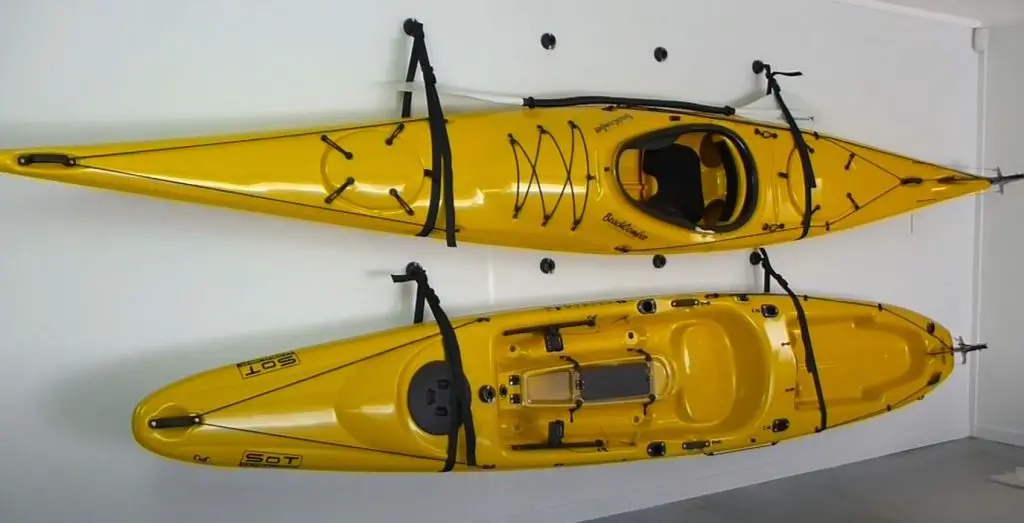
First, you could hang your kayak on the wall. How? Rest it horizontally on its side. Let the cockpit point face outwards so that it is tilted against the wall.
You will need padding between the kayak and the floor if it does touch the floor. A strap system could be used, or a DIY rope system could be used. Strap systems are covered below in the article.
With this method, it is important to flip the kayak from time to time to minimize dents. Dents are impossible to avoid, but to prolong the life of your kayak, store it in a way that will reduce damage and help extend the life of your kayak.
And below, I’ll leave you with a video where you’ll see clearly how to store the kayak in the apartment by hanging it on the wall.
Method 2: Store your kayak vertically
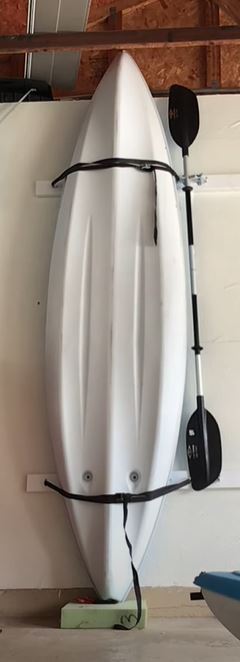
Alternatively, you can store the kayak in a vertical position. To do this, make sure the cockpit points outwards, again, at a slight angle.
You will also need to put padding underneath the kayak at the point where it touches the ground. This will keep it from sliding and falling. It is better to have the stern (back) of the kayak at the base sitting on top of the padding.
This is because the stern has a wider point, making it sturdy and less prone to damage.
The padding can be anything that is soft; improvise with cloth rags, cushions, old towels, or any other stuffing that is strong enough but soft enough to absorb the weight of the kayak.
Method 3: Use a suspension system
Now, suspension systems are tricky. Some people advise against them, while others swear by them. Make sure that your ceiling and ceiling mounts are very strong. And the rope and pulley system needs to be installed properly.
If you are a competent DIYer, you can go ahead and install this yourself. However, if you are not confident about your construction skills, this may not be the project to start with. My advice is to get someone to either install or assist you.
You can buy a suspension system from the store or create one yourself. Essentially, when you mount any suspension system, there has to be a strong ceiling mount attached to a ceiling joist or beam.
Then a network of pulleys is installed on the ceiling mounts to hoist the kayak from the two ends. Now it is important to have the pulley not be directly attached to the kayak’s handles but to sturdy straps or ropes that wrap around the kayak.
The pulleys should work in such a way that the weight of the kayak is evenly distributed.
I’ll leave a video below where you can see how to do it.
Method 4: Use strap systems
These can be mounted to the wall or used on a free stand. They may be the easiest to install. Like the wall brackets described below, you will need to find studs or a strong column to mount the brackets.
They need to be at an equal distance from the center of the kayak to distribute the weight of your kayak evenly. Depending on how heavy the kayak is, you may need help stowing it away when you wrap the straps around it.
If you have a free stand, it offers flexibility in moving the storage area for your kayak around.
Take a look at the video below to see how a strap system can be installed and used.
Method 5: Wall brackets
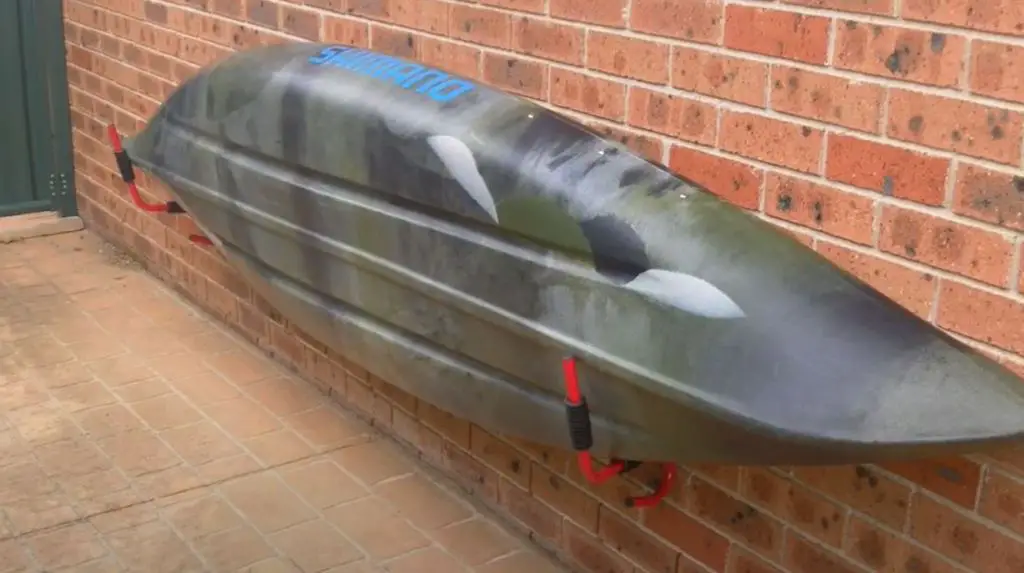
The fifth is a wall bracket. For the handy kayakers, wall bracket racks can be made, and for the rest of us, you can buy a rack from a store. Wall bracket racks come in many varieties.
Some stand on their own, while others are mounted to studs in the wall.
You can either store the kayak vertically or horizontally. Make sure to follow the guidelines for storing them either way.
The stern side is on the bottom if stored vertically with padding to cushion it on the floor. And horizontally, with the cockpit oriented outward and upward. Flip periodically as well.
Do’s
Now, there are a few things to be reminded of when storing your kayak indoors. The first thing would be to remove soft coverings such as seats, ropes, and linings.
Next, it is recommended to wash the kayak. You can use a mild soap and sponge to clean the inside and outside of the kayak. And finally, rinse off making sure that no soapy suds remains
Make sure to dry the kayak thoroughly. If you are storing for a long time, especially over the winter, you will want to avoid mold and mildew that can grow from dampness on your kayak.
Also, make sure that your kayak is hanging from the correct points and not putting pressure on points like the deck lines, hatches, or cockpit. You want an even distribution to avoid dents or buckles in the hull. Additionally, in one of the Paddling.com articles, it is recommended not to leave the kayak in the same position for a long time, as this can lead to deformation of the hull. So over time, try to change the position of your kayak.
Finally, you would want to cover your kayak. Even though it is inside your apartment, coverings are advised to minimize dust. This is especially important if you are storing the kayak over a long period between autumn and spring, through the winter.
It is possible to get away without covering if you kayak frequently.
A dry, cool, and dark place is the best for storing your kayak. Try to find the best spot in your apartment for this.
Don’ts
There are definite things to avoid when storing your kayak in your apartment.
First, don’t store your kayak in a place where access is difficult. Also, don’t keep it in a high-activity area, such as a hallway, where it could be used for other purposes.
Avoid hanging your kayak from its handles, as it may damage them. Transporting your kayak may become an issue if the handles are damaged.
Don’t try to store your kayak flat with the cockpit facing up or down. This can stress crucial points around the cockpit and cause the kayak to warp.
And as I wrote earlier, avoid places with moisture, heat, cold, and direct sunlight.
In Summary
Finally, your personal preferences, along with the size and layout of your apartment, will determine the best option for you. You will need to design your space thoughtfully.
However, if you are struggling for space, don’t force any solution into your space.
You may need to opt for storage at a rental unit. Keep in mind that the storage methods listed here for use in a rental storage unit will help you maximize that space.
In addition, if you’re finishing the season and looking for a place to store your kayak, you’ll probably also take care of the maintenance of your kayak. So lastly, I suggest reading this article on how to repair scratches on a kayak.
How to repair scratches on your kayak. Here you’ll find methods for kayak scratch repair.

